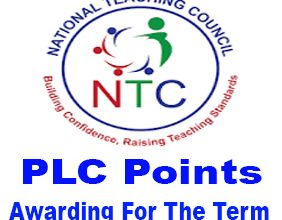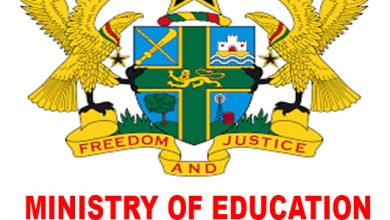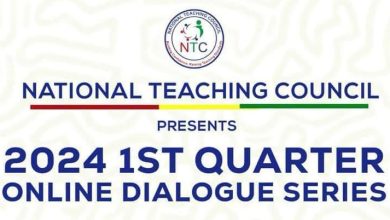Related Questions On Classroom Management/Theories of Teaching and Learning
Classroom Management/Theories of Teaching and Learning
SUMMARY ON CLASSROOM MANAGEMENT IN GHANA EDUCATION SERVICE
Classroom management refers to the strategies and techniques used by teachers to create a positive learning environment and promote effective learning. Effective classroom management involves creating a safe and organized learning environment where students feel motivated to learn and are able to achieve their full potential. In this response, I will provide a detailed overview of classroom management in education.
- Establishing clear expectations: The first step in effective classroom management is establishing clear expectations for behavior and academic performance. Teachers should communicate these expectations to students at the beginning of the school year and reinforce them regularly. This includes setting rules and consequences for non-compliance.
- Building positive relationships: Teachers should build positive relationships with their students to create a positive classroom climate. This includes listening to students, being supportive, and showing empathy. When students feel that their teachers care about them, they are more likely to feel motivated to learn and behave appropriately.
- Creating a positive learning environment: Teachers should create a positive learning environment by establishing a clean and organized classroom, displaying positive messages and inspirational posters, and providing engaging and age-appropriate learning resources.
- Encouraging active student participation: Teachers should encourage active student participation by providing opportunities for students to collaborate and work together on group projects. This encourages the development of social skills and promotes effective communication.
- Implementing effective instructional strategies: Teachers should use a variety of effective instructional strategies, such as differentiated instruction, cooperative learning, and student-centered teaching, to engage all students and promote learning.
- Encouraging self-regulation: Teachers should encourage students to develop self-regulation skills by teaching them to manage their own behavior and academic performance. This includes teaching students to set goals, monitor their progress, and reflect on their learning.
- Providing effective feedback: Teachers should provide effective feedback to students to promote learning and academic growth. This includes providing specific feedback that identifies strengths and weaknesses and provides strategies for improvement.
- Addressing disruptive behavior: Teachers should address disruptive behavior promptly and consistently. This includes addressing the behavior privately, redirecting the student’s behavior, and providing consequences for non-compliance with classroom expectations.
In summary, effective classroom management is crucial for promoting a positive learning environment and helping students achieve their full potential. Teachers should employ a variety of strategies to create a positive learning environment, build positive relationships with students, encourage active student participation, and provide effective feedback to promote academic growth. Teachers should also address disruptive behavior promptly and consistently to maintain a safe and effective learning environment.
Classroom Management Questions & Answers
- What is classroom management?
Answer: Classroom management refers to the strategies and techniques used by teachers to maintain a positive and organized learning environment in the classroom.
- Why is classroom management important?
Answer: Classroom management is important because it helps to create a conducive learning environment that is conducive to the academic and social development of students.
- What are some common classroom management techniques?
Answer: Common classroom management techniques include establishing clear rules and expectations, using positive reinforcement, setting consequences for negative behavior, and creating a positive classroom climate.
- How can teachers establish clear rules and expectations?
Answer: Teachers can establish clear rules and expectations by involving students in the process of creating classroom rules, posting the rules in the classroom, and consistently enforcing the rules.
- What is positive reinforcement?
Answer: Positive reinforcement is a technique where teachers reward students for positive behavior, which encourages students to continue exhibiting that behavior.
- How can teachers set consequences for negative behavior?
Answer: Teachers can set consequences for negative behavior by establishing clear consequences for breaking classroom rules and consistently enforcing those consequences.
- What is a positive classroom climate?
Answer: A positive classroom climate is one where students feel respected, supported, and valued by the teacher and their peers.
- How can teachers create a positive classroom climate?
Answer: Teachers can create a positive classroom climate by building positive relationships with students, using positive language, and promoting a sense of community in the classroom.
- What is the role of the teacher in classroom management? Answer: The role of the teacher in classroom management is to create a positive learning environment that fosters academic and social development, and to provide guidance and support to students.
- How can teachers create a safe and inclusive classroom environment?
Answer: Teachers can create a safe and inclusive classroom environment by promoting respect and acceptance of diversity, creating a sense of community, and addressing any issues of bullying or discrimination.
- What are some common challenges in classroom management?
Answer: Some common challenges in classroom management include student misbehavior, lack of student engagement, and disruptive classroom environments.
- How can teachers address student misbehavior?
Answer: Teachers can address student misbehavior by setting clear expectations, providing consequences for negative behavior, and providing positive reinforcement for positive behavior.
- What are some strategies for engaging students in the classroom?
Answer: Strategies for engaging students in the classroom include creating hands-on activities, using technology, and using group work and discussions.
- What is the role of parents in classroom management?
Answer: The role of parents in classroom management is to support their children’s education and to work with teachers to promote positive behavior and academic success.
- How can teachers communicate effectively with parents?
Answer: Teachers can communicate effectively with parents by providing regular updates on their children’s progress, soliciting feedback, and addressing any concerns in a timely manner.
- How can teachers manage a diverse classroom?
Answer: Teachers can manage a diverse classroom by recognizing and valuing diversity, creating a safe and inclusive environment, and providing support to students who may need extra help.
- What is the importance of teacher self-care in classroom management?
Answer: Teacher self-care is important in classroom management because it helps teachers to maintain their energy and focus, and to avoid burnout.
- What are some self-care strategies for teachers?
Answer: Self-care strategies for teachers include taking breaks, engaging in hobbies and interests, seeking support from colleagues, and practicing mindfulness or meditation.
- How can technology be used to support classroom management?
Answer: Technology can be used to support classroom management by providing tools for tracking student behavior, creating engaging learning activities, and communicating with students and parents.
- What is the importance of ongoing professional development in classroom management?
Answer: Ongoing professional development is important in classroom management because it
OBJECTIVES QUESTIONS ON CLASSROOM MANAGEMENT
1. What is the primary purpose of classroom management?
a) To control students and limit their behavior
b) To promote a safe and positive learning environment
c) To increase the workload for teachers
d) To create a noisy and chaotic classroom environment
2. Which of the following is not an important component of effective classroom management?
a) Providing clear rules and expectations for student behavior
b) Building positive relationships with students
c) Ignoring disruptive student behavior
d) Encouraging student engagement and participation
3. Which of the following best describes a positive classroom culture?
a) A classroom where students are encouraged to compete with each other
b) A classroom where students feel safe and supported
c) A classroom where students are constantly reprimanded and punished
d) A classroom where students are left to their own devices
4. Why is it important for teachers to establish clear rules and expectations for student behavior?
a) To limit student freedom and creativity
b) To create a sense of structure and routine in the classroom
c) To make students feel anxious and stressed
d) To allow students to do whatever they want in the classroom
5. Which of the following is not an effective classroom management technique?
a) Providing students with frequent positive feedback and praise
b) Punishing students for every misbehavior
c) Using humor and lightheartedness to diffuse tense situations
d) Encouraging active student participation and collaboration
6. Which of the following best describes a teacher who has established a positive relationship with their students?
a) A teacher who is strict and authoritarian
b) A teacher who is distant and detached
c) A teacher who is warm and caring
d) A teacher who is constantly critical and negative
7. What is the most important factor in establishing a positive learning environment?
a) Maintaining a high level of control over students
b) Building positive relationships with students
c) Creating an environment of fear and anxiety
d) Ignoring students who misbehave
8. How can teachers promote student engagement and participation in the classroom?
a) By lecturing for long periods of time
b) By providing students with frequent feedback and praise
c) By encouraging students to compete with each other
d) By ignoring student contributions in the classroom
9. What are some common classroom management objectives?
a) Promoting a positive and inclusive classroom culture, establishing clear rules and expectations for student behavior, and providing meaningful and engaging learning experiences
b) Creating a noisy and chaotic classroom environment to encourage student participation
c) Encouraging students to disrespect and challenge their teacher’s authority
d) Fostering an environment of competition and hostility among students
10. How can teachers respond effectively to challenging or disruptive student behavior? a) By punishing students immediately and severely
b) By ignoring the behavior and hoping it will go away
c) By having a private conversation with the student to discuss the behavior and possible solutions
d) By mocking or belittling the student in front of their peers
11. Which of the following is not an effective way to manage a classroom?
a) Building positive relationships with students
b) Establishing clear expectations for behavior
c) Ignoring student behavior
d) Providing meaningful and engaging learning experiences
Theories of Teaching and Learning Questions and Answers
- What is behaviorism?
Answer: Behaviorism is a theory that focuses on observable and measurable behaviors. It suggests that learning occurs when a response is reinforced or punished.
- What is constructivism?
Answer: Constructivism is a theory that suggests that learners construct their own knowledge and meaning from their experiences. It emphasizes the importance of active learning, critical thinking, and problem-solving.
- What is cognitivism?
Answer: Cognitivism is a theory that focuses on mental processes such as perception, memory, and problem-solving. It suggests that learning occurs when new information is connected to prior knowledge and understanding.
- What is humanism?
Answer: Humanism is a theory that focuses on the individual and their unique experiences. It suggests that learning occurs when the learner is motivated and engaged, and when their emotional and psychological needs are met.
- What is social learning theory?
Answer: Social learning theory suggests that people learn from observing others and the consequences of their actions. It emphasizes the importance of modeling and reinforcement in the learning process.
- What is the zone of proximal development?
Answer: The zone of proximal development (ZPD) is a concept introduced by Lev Vygotsky. It refers to the range of tasks that a learner can perform with the assistance of a more knowledgeable other. The ZPD is seen as a key area for learning and development.
- What is the experiential learning cycle?
Answer: The experiential learning cycle is a model of learning introduced by David Kolb. It suggests that learning occurs through a cyclical process of concrete experience, reflection, abstract conceptualization, and active experimentation.
- What is the importance of motivation in learning?
Answer: Motivation is important in learning because it affects the level of engagement and effort that a learner puts into a task. Motivated learners are more likely to persevere through challenges and be open to new ideas, leading to better learning outcomes.
- Which of the following is not a learning theory?
- Behaviorism
- Social learning theory
- Dual coding theory
- Humanism
Answer: c. Dual coding theory
- According to behaviorism, learning occurs through:
- Cognitive processes
- Observing and imitating others
- Reinforcement or punishment of observable behaviors
- Active experimentation
Answer: c. Reinforcement or punishment of observable behaviors
- Which of the following theories emphasizes the importance of prior knowledge in learning?
- Behaviorism
- Constructivism
- Cognitivism
- Humanism
Answer: c. Cognitivism
- Which theory emphasizes the role of emotions in learning?
- Behaviorism
- Constructivism
- Cognitivism
- Humanism
Answer: d. Humanism
- According to social learning theory, people learn by:
- Observing and imitating others
- Reinforcement or punishment of observable behaviors
- Connecting new information to prior knowledge
- Constructing their own knowledge and meaning
Answer: a. Observing and imitating others
- What is the zone of proximal development?
- The range of tasks that a learner can perform independently
- The range of tasks that a learner can perform with the assistance of a more knowledgeable other
- The range of tasks that a learner is not yet ready to perform
- The range of tasks that are not relevant to the learner’s goals
Answer: b. The range of tasks that a learner can perform with the assistance of a more knowledgeable other
- Which learning theory emphasizes the importance of active experimentation and reflection?
- Behaviorism
- Constructivism
- Cognitivism
- Humanism
Answer: b. Constructivism
- According to humanism, what is the role of the teacher?
- To provide reinforcement or punishment for observable behaviors
- To construct new knowledge for the learner
- To provide a supportive and nurturing environment for the learner
- To observe and imitate others
Answer: c. To provide a supportive and nurturing environment for the learner
- What is the experiential learning cycle?
- A model of learning that emphasizes the importance of concrete experience, reflection, abstract conceptualization, and active experimentation
- A model of learning that emphasizes the role of reinforcement and punishment in shaping observable behaviors
- A model of learning that emphasizes the importance of prior knowledge in constructing new knowledge
- A model of learning that emphasizes the importance of observing and imitating others
Answer: a. A model of learning that emphasizes the importance of concrete experience, reflection, abstract conceptualization, and active experimentation
- Which learning theory suggests that people construct their own knowledge and meaning from their experiences?
- Behaviorism
- Social learning theory
- Cognitivism
- Constructivism
Answer: d. Constructivism
- According to behaviorism, learning is:
- A product of reinforcement and punishment
- A result of constructing new knowledge
- A result of connecting new information to prior knowledge
- A result of modeling and reinforcement of others’ actions
Answer: a. A product of reinforcement and punishment
- Which of the following is not a characteristic of humanism?
- Focus on individual needs and experiences
- Emphasis on observable behaviors
- Importance of emotions and motivation
- Emphasis on active learning and problem-solving
Answer: b. Emphasis on observable behaviors
NOTE ON THEORIES OF TEACHING AND LEARNING
There are several theories of teaching and learning that have been developed over time by educational theorists and psychologists. In this response, I will provide a brief overview of some of the most well-known theories.
- Behaviorism: Behaviorism is a theory that focuses on observable behaviors and emphasizes the role of reinforcement and punishment in learning. According to this theory, learners can be trained to respond in certain ways through conditioning. One of the most famous behaviorists was B.F. Skinner, who developed the concept of operant conditioning.
- Cognitive Theory: Cognitive theory focuses on the mental processes that underlie learning. This theory emphasizes the importance of knowledge and the role of thinking in learning. According to this theory, learners actively construct their own understanding of the world around them through a process of assimilation and accommodation.
- Constructivism: Constructivism is a theory that emphasizes the active role of the learner in the learning process. According to this theory, learners construct their own understanding of the world by building on their prior knowledge and experiences. This theory places a strong emphasis on experiential learning and encourages learners to engage in hands-on activities.
- Social Learning Theory: Social learning theory emphasizes the role of social interaction in learning. According to this theory, learners acquire new knowledge and skills by observing and imitating others. This theory also highlights the importance of feedback and the role of reinforcement in learning.
- Humanistic Theory: Humanistic theory emphasizes the importance of individuality and the potential for personal growth and development. According to this theory, learning is most effective when it is relevant and meaningful to the learner. This theory also emphasizes the importance of creating a positive learning environment and promoting self-motivation.
- Multiple Intelligences Theory: Multiple intelligences theory proposes that individuals possess different types of intelligence and that these intelligences are interconnected. According to this theory, individuals may excel in one or more of the following intelligences: linguistic, logical-mathematical, spatial, bodily-kinesthetic, musical, interpersonal, intrapersonal, and naturalistic.
- Information Processing Theory: Information processing theory focuses on how individuals process and store information. This theory emphasizes the importance of attention, memory, and problem-solving in the learning process.
Overall, these theories provide different perspectives on how teaching and learning can be approached. Teachers and educators can draw on these theories to inform their instructional strategies and to create effective learning environments that meet the diverse needs of learners.








One Comment